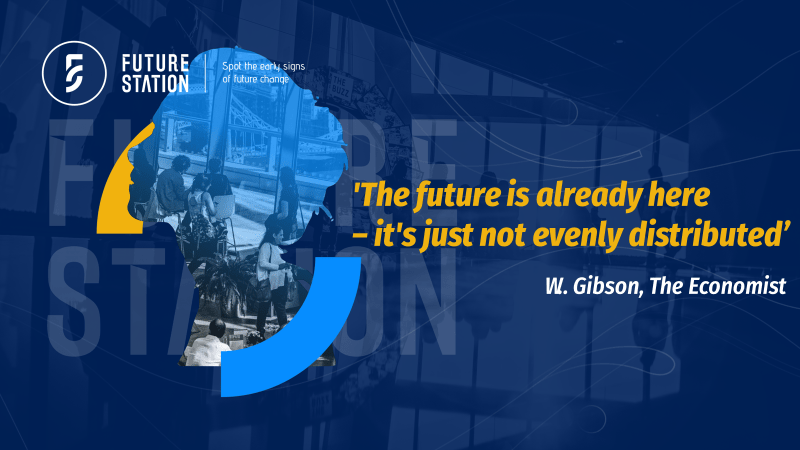What’s next for Retail?
Diana Stafie is Foresight Strategist & Founder of Future Station, a consultancy practise focused on strategy building by using foresight methodology and tools. Understanding “How the Future of… might look like” is the core mission. Diana designs and runs Future Scenarios and Trends Scanning projects, Trends lectures and future-related keynotes.
What does the future hold for retail after the Covid19 pandemic?
What new consumer needs have emerged?
What innovations are brands considering?
I have recently collaborated with Retail Expert Vlad Ardeleanu on a foresight project aimed at developing scenarios for a post Covid19 reality. And below we have summarized some of our conclusions regarding the retail context.
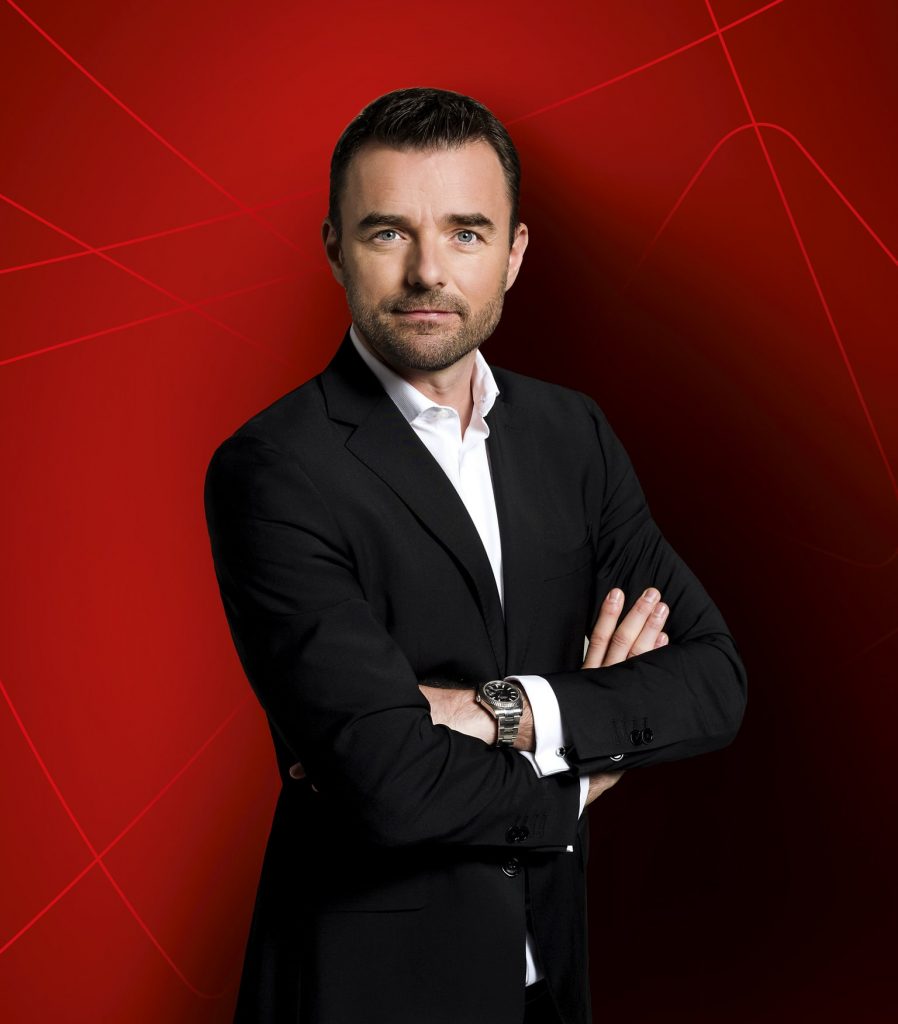
Retail Expert Vlad Ardeleanu
Learn about foresight and scenario planning.
Retail sales surge to pre-Covid19 levels – a cause for optimism?
Covid19 pandemic has fundamentally changed the global retail landscape. Shopper behaviour has evolved and adapted with unprecedented speed. Today, shoppers are more selective and discerning in how they shop and what they buy.
Reading consumer behaviour was never easy. Today, deciphering the consumer looks more difficult than ever.
Consumer confidence and sales trends are always good indicators to start learning about retail status-quo. It is a good place to start in understanding metrics about consumer behaviour.
With 2019 confidence levels at historic high, it was only natural that Covid19 would rapidly erode confidence and send the index to historic lows.
Nielsen’s Global Consumer Confidence Index fell from 107 to 92 in 2020. And retail sales follow confidence levels. US retail sales fell 9% in March and 16% in April versus last year. The EU had similar patterns, with retail trade down 8% in March and 18% in April.
When the outlook is all bleak and global expert consensus forecasted retail sales decrease of 10% in 2020, a surprise happened. Sales surged back with unprecedented strength.
US and EU sales jumped back 18% in May. More growth followed in June with 8% in the US and 5% in the EU. Retail spending in July topped pre-pandemic levels announced by both the US and EU.
Asian countries made similar announcements. After all the panic and close parallels with the Great Depression (or other crisis), having till now only three negative months in retail sales is unexpected great news. Can this be a cause for optimism?
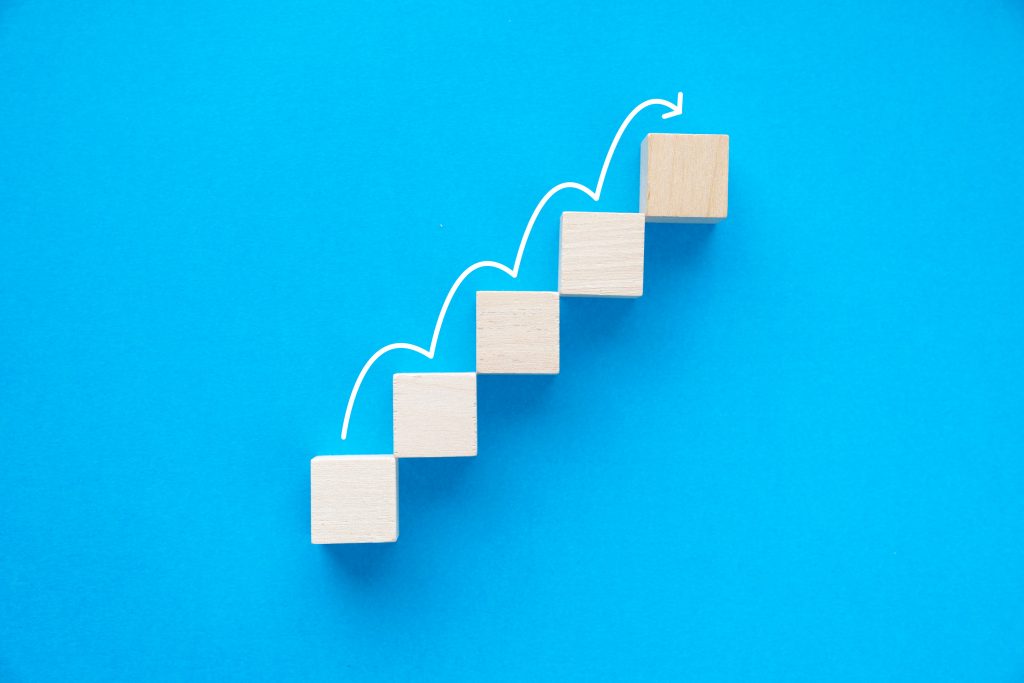
Retail innovation landscape
Here are 4 examples of how retail brands have adopted already to the new landscape:
1. Voice-based e-commerce grocery shopping experience (June 2020)
France-based Carrefour and Google launched voice-controlled grocery shopping for the grocery chain’s e-commerce platform. After connecting their Google and Carrefour accounts, shoppers can add items to their shopping list using voice commands via Google Assistant on their smartphone or other devices. More details here.
2. Free telenutrition service to promote healthy and affordable eating (May 2020)
Kroger Health offers telemedicine consultations to help consumers make healthier dietary choices. The service was launched in response to tightened consumer budgets and reduced availability of fresh produce due to the coronavirus. More details here.
3. Contact-free shopping and collection
Selver, an Estonian supermarket chain, launched a robotic grocery locker service allowing customers to collect online orders without human contact. With two temperature zones, the robot can safely store fresh and frozen items, offering convenient curbside pick up in various locations. More details here.
4. Smart shopping cart for cashier-less shopping (July 2020)
Amazon unveiled Dash Cart: a smart shopping cart that allows shoppers to skip checkout lines. To use the Dash Cart, shoppers scan an on-screen QR code with the Amazon app to verify their account. The cart uses built-in cameras and scales to detect items placed inside. More details here.
Future of Retail: implications
Consumers expect Covid19 period to be limited. Despite the drop in reported consumer confidence, we trust that consumers expect this Covid19 period to be brief.
The possible availability of a vaccine early next year could mean a return to normality in the next six to ten months. One argument in favour of this idea is that some of the important share price indexes are already back to pre-pandemic levels.
However, consumer shopping behaviour will never go back. If for volume levels we already see recovery, we cannot say the same about consumer shopping behaviours. The crisis has prompted a surge of new activities, with a good percentage of consumers trying new shopping behaviour in response to economic pressures, store closings, and changing priorities. But which of these changes will stick?

5 highly important changes we believe brands should consider
1. Low touch retail is here to stay
The low touch economy refers to the newly imposed restrictions and constraints that will dictate the direction of retail. As coined by the Board of Innovation, the idea of “low touch economy” pinpoints the drastic change in the way businesses will see more reliance on automation or robots to overtake repetitive tasks, regular cleaning in storefronts, and having employees work remotely.
2. E-commerce in the spotlight
While the shift to online shopping has been near-universal across categories, high-income earners and millennials are leading the way in shifting spend online across both essential and non-essential items.
A McKinsey study published in August 2020 found that consumers significantly intend to shop online even after the Covid19 crisis. There is a 10% average growth in customers purchasing online in each and every category.
Digital shopping is definitely here to stay, with categories such as over-the-counter medicine, groceries, household supplies and personal-care products to grow the fastest.
3. Affordability seekers
Some of the current changes in consumer behaviour will largely mirror the changes that manifested during the 2008 recession, yet on a shorter time-frame and with greater speed.
Most consumers today worry about the state of the economy, how long this crisis will last and overall health concerns. Population savings are growing everywhere in the world since consumers are increasingly looking for value and affordability in their spending.
4. Data-driven retail
Mastering data enables you to understand and manage operational activities, such as customer pickup options, customer profiles and product preferences.
Understanding each of these characteristics allows you to develop a 360-degree view of your customer — and better meet their needs. A great example here is the approach of UK-based retailer Sainsbury’s. Using data and analytics Sainsbury’s has designed its new locations in order to match the needs of busy city workers (more details here).
5. Brand loyalties are disrupted
Product availability has been top of mind for consumers as food manufacturers adjust to meet surging retail demand during early days of the COVID-19 pandemic. Empty shelves and temporary stock-outs have disrupted brand loyalty and generated increased trials of both national branded and private label grocery items.
Price sensitivity has also been a factor. Consumers have been more willing to try new private label brands than national brands. Shopping behaviour favouring convenience and proximity was another factor for brand loyalty.
A surprising upturn for the smaller convenience stores was registered, despite difficult sales in Q2 2020. This was first spotted in Asian markets and went on to become a world trend as reported by a recent Nielsen survey.
In light of economic uncertainty, consumers will continue shopping closer to home for a more diverse assortment of products and categories.
Recommendations
It’s time to face the facts, do not underestimate the uncertainty and prepare for the future:
- Talk possibilities
- Look back to see forward
- Scan for change
- Forget about predictions
Join the Conversation
We’d love to hear what you have to say.
Get in touch with us on our LinkedIn Group, Facebook Group or Twitter.
The Future of the Events Industry: 4 Scenarios
The months pass and the number of Covid-19 deaths continues to increase. Even those who had resisted social distancing initially became sufficiently anxious, and the practice became the norm – with the help of some gentle and not-so-gentle governmental nudges.
The multiple initiatives on vaccine development failed to reach a conclusive result. People continued to try to find ways to live and work under the new constraints. Research into antibody testing is more successful, and eventually reliable and cheap testing kits with quick results become available.
Much of the events industry has shifted online following an initial period of shock. Events platforms (some end-to-end, some offering specific functionality only) spring up to cope with demand and are eventually swallowed up by two big players – Zoom and Microsoft Teams.
Events companies find themselves having to run events in parallel on both platforms as attendees are usually locked into one ecosystem and reluctant to use the other. After Apple runs a press event for the iMask in Fortnite, gaming companies begin to court event organizers, offering their servers and digital environments up as conference venues. The International Police Association’s global summit attracts much controversy when it is held inside Grand Theft Auto.
Organizers find themselves having to be creative in order to enhance value for attendees and find ways for sponsors and partner to promote themselves. It becomes typical to send attendees a physical kit ahead of the event containing reading material and promotional merchandise related to the topic.
With venues still inaccessible due to lockdown, the TEDx model also becomes popular, with many organizers licensing out their products to be run as smaller, more interactive online sessions. Many events organizers start experimenting with sending VR kits to attendees so that they can feel more immersed in the conference (for an enhanced ticket fee).
Among the topics discussed are: economic reconstruction, remote productivity, supply chain & logistics, and home baking.
This is a story about the future.
It is a future scenario narrative developed by James McLintock (UK-based Brand Strategist) after accepting my invitation for visioning a “Life in Isolation” future scenario in which social distancing becomes the norm in our society and there are no vaccines available yet.
What I love about scenarios is that it helps people live better with uncertainty. At its core, a scenario is a story, a view of how the future might unfold. This story triggers imagination and reflection by challenging current assumptions and known truths.
[bctt tweet=”Foresight Expert Diana Stafie on the future of the events industry: No more prizes for those predicting the future, but for those building future preparedness. #eventsindustry #foresight ” username=”brand_minds”]
But how did I get to such a “Life in Isolation” future scenario?
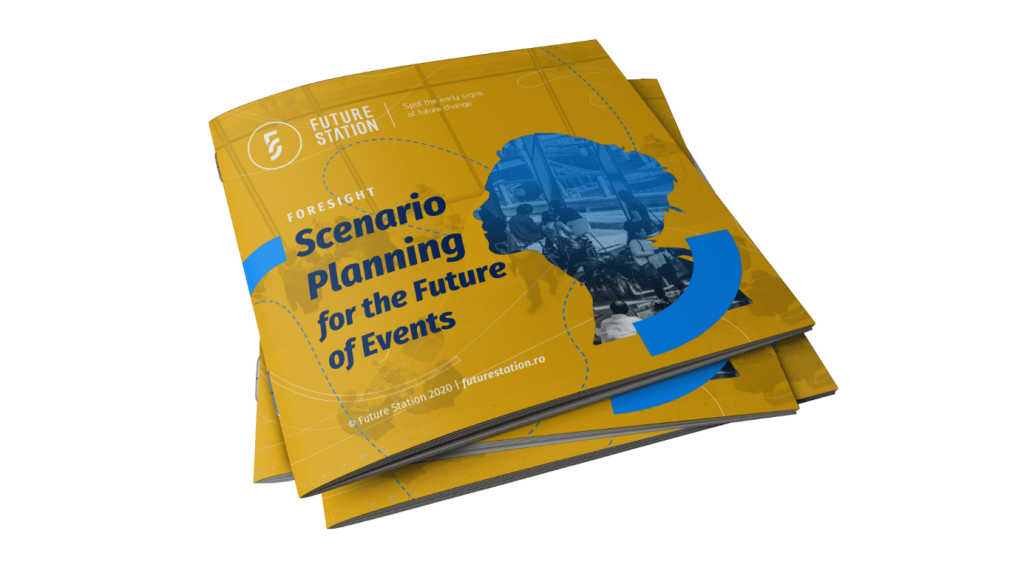
In a recent Foresight endeavour looking at the Future of Events industry, we created several alternative scenarios.
The steps followed are illustrated in our framework below:
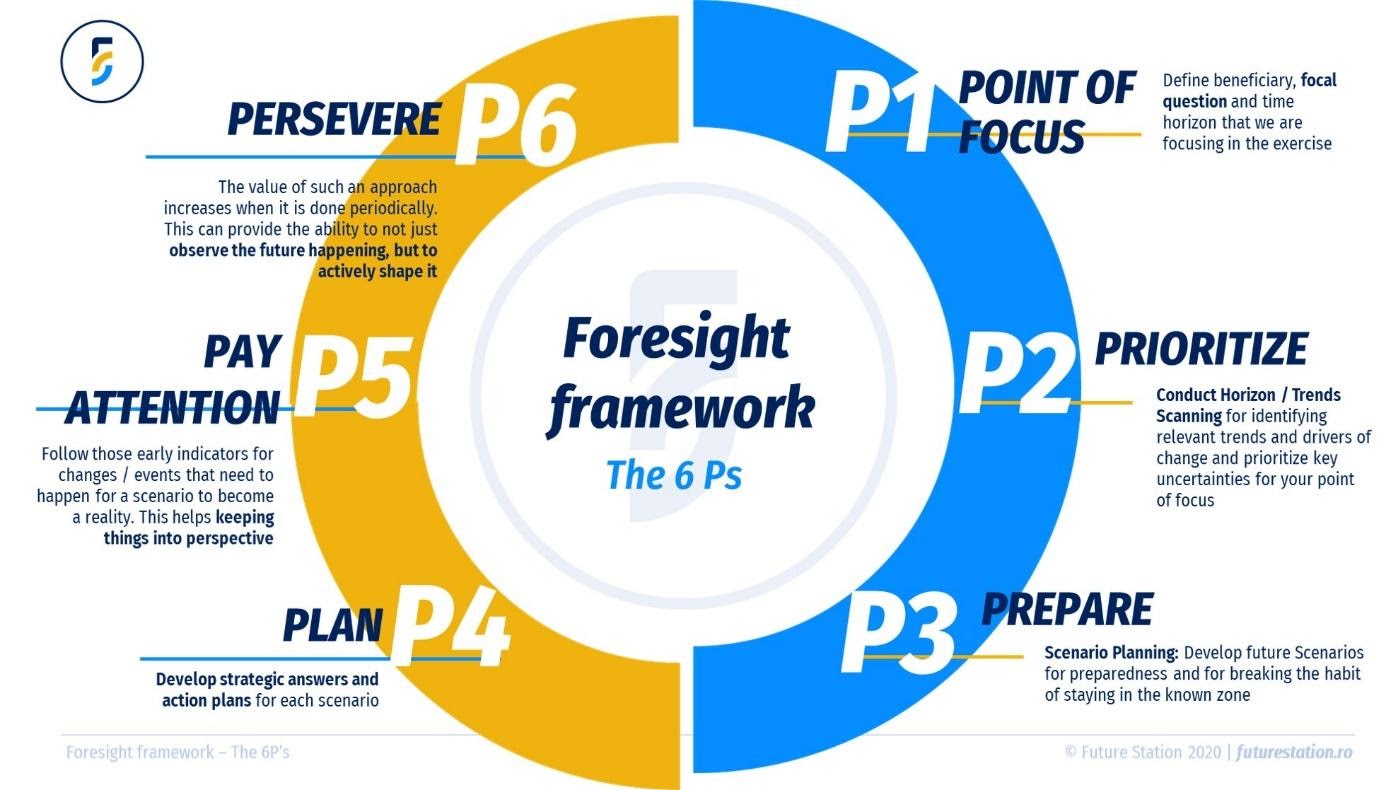
One of the most delicate steps is identifying the most important factors that will shape the future of the events industry in the chosen time horizon. And then assessing the (un) certainty of their future development.
Those for which we consider that there are multiple ways in which they could play out became our key uncertainties and were further used in developing alternative scenarios.
In the current uncertain times, when social beliefs and attitudes, regulations, markets could suffer tremendous change on a weekly basis, I think there are no more prizes for those predicting the future, but more for those building future preparedness.
Some of these key uncertainties and the extreme ways in which they could play out in the future are illustrated below:
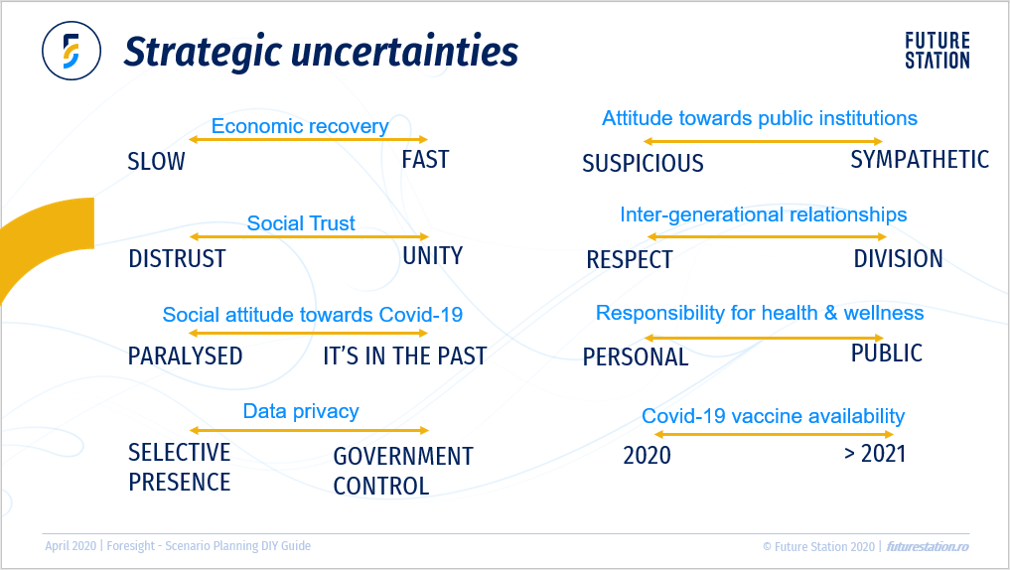
The Scenario Planning technique pairs two uncertainties (from different categories) to create a 2 x 2 matrix of possibilities.
Each quadrant of the matrix creates a possible scenario, a unique and specific possible future that emerges at the intersection of the extreme ways in which two uncertainties can unfold.
This thought exercise forces us to consider four very different sets of possible outcomes and enables us to think beyond our instinctual response and obvious assumptions.
Combining two of our uncertainties, we came up with the below 2×2 matrix:

The lower-left quadrant is the “Life in Isolation” scenario visioned at the beginning of this article. Interestingly, a couple of weeks after developing these scenarios, we saw an indicator in the media – games being used as meeting environments.
Now, if you are in the events industry, I invite you to further explore #ScenarioPlanning and to consider:
What would your business and operating environment look like if similar scenarios became a reality?
What would your strategy be for each scenario?
Join the Conversation
We’d love to hear what you have to say.
Get in touch with us on our LinkedIn Group, Facebook Group or Twitter.
Scenario Planning and Foresight under Uncertainty
In this article:
- What is Scenario Planning?
- How to choose between Future-Driven Scenario and Decision-Driven Scenario
- The 4 Levels of Uncertainty
- Scenario Planning DIY Guide
- Conclusion
How can organizations facing uncertainties decide on their response?
Underestimating uncertainty can lead to strategies that neither defend against the threats nor take advantage of the opportunities. Just think of the famous underestimation made in 1943 by Thomas Watson, Chairman of IBM:
“I think there is a world market for maybe 5 computers”.
There is probably not one single approach that makes the challenges of leading in uncertainty go away.
What follows in this article is a model to use when assessing uncertainty and an overview of Scenario Planning as a possible tool for better decision making.
What is Scenario Planning?
While there have always been different views on the value and applicability of scenarios in business, I believe, these days, the business world needs more than ever to think in scenarios.

Source: Diana Stafie
The concept of Scenario Planning emerged after World War II as an approach for military planning.
Starting with the 60s, Scenarios Planning also permeated the business world as it helped leaders working with complex concepts and uncertainties to create coherent and plausible stories about the future they could work with when planning their strategies.
Scenario Planning is one of the tools we use in our Foresight practice (read here for more details).
What we love about it is that it helps people live better with uncertainty. At its core, a scenario is a story, a view of how the future might unfold. And that triggers imagination and reflection by challenging current assumptions and known truths.
When we talk about scenario planning, we can distinguish between the following two approaches: future-driven scenarios and decision-driven scenarios.
[bctt tweet=”Foresight expert Diana Stafie on Scenario Planning: Scenario Planning helps business people live better with uncertainty. ” username=”brand_minds”]
Future-Driven Scenarios
Future-driven scenarios help teams think beyond the known by questioning their assumptions and beliefs about the future.
Think of them as Exploratory scenarios: it helps organizations explore the new trends and signals of change, creating new strategic options, inspiring learning and conversations about possible futures.
This is typically an exercise we do with our clients as part of their strategy building exercises or when they are seeking future business opportunities.
It is also a very good tool to change mindsets and build openness to change.
Decision-Driven Scenarios
Decision-driven scenarios are used in choosing a certain strategic approach when faced with incomplete or uncertain information about the future:
Shall we build new capacity when we are not sure about the market demand?
Shall we enter this new market, launch this new product?
In these cases, scenarios may help determine the benefits and risks of the specific decision in various circumstances.
Most of our work in foresight deals with future-driven scenarios. However, as many leaders these days need to make important decisions regarding their business activity, we will focus on describing decision driven scenarios.
4 Levels of Uncertainty in Decision-Driven Scenarios
When building scenarios for decision making, Professor Hugh Courtney, author of the book 20/20 Foresight: Crafting Strategy in an Uncertain World – suggests tailoring the approach by assessing the level of uncertainty you are dealing with.
He identified four levels of uncertainty an organization could face:
Level 1 – The future is almost clear
Level 1 is when uncertainties are present, but their possible outcomes are narrow so it is relatively easy to choose a strategic answer.
For example, the variation of the rate of return in mature markets, or the reaction of customers to new strategies of well-known brands. In this case, you could simply model the impact of the uncertainty through a simulation and use traditional strategic tools (e.g. market research, Porter 5F,..)
Level 2 – There can be alternative futures
Level 2 is when uncertainties are limited to a few possible outcomes, such as the introduction of new regulations, or coming elections with different agendas on the table.
Such uncertainties may lead to divergent futures. In this case, we need to define in detail the possible outcomes for each situation and specify the implications for the strategic decisions we have in front of us.
What is important is to have different strategic options prepared for each scenario, with various risk returns.
Start by asking relevant What if questions: What if …happens, what shall we do?
For example:
What if a global pandemic blocks all interaction between people and business?
Level 3 – There is a range of futures ahead of us
Level 3 is when uncertainties can lead to a range of possible outcomes, such as the performance of new technologies, or market demand for new products, or the upcoming economic downturn.
A tool that we use in our Foresight practice is the Cone of Uncertainties and Possibilities.
The tool visually depicts the idea that there are many future possibilities and levels of uncertainty. More probable future’s paths are those closer to the centre, whereas in the outskirts of the cone you will find those possibilities with high uncertainty.
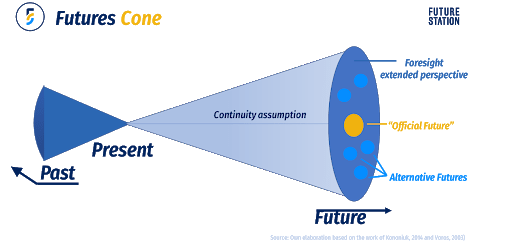
Source: Diana Stafie
In a situation with Level 3 uncertainty, we start by clearly describing the strategic question you need to answer.
You continue by identifying the major drivers of change and uncertainties ahead and, together with a team of experts from your company, choose the ones that you believe will impact your business the most.
By looking at the spectrum of possible outcomes for each uncertainty, build a limited number of scenarios that describe distinct, plausible futures.
Evaluate your strategic options against each of the scenarios and assess how robust each of your strategies or actions are. You will probably find it hard to calculate KPIs and numbers, therefore most decisions will rely on qualitative data.
Level 4 – The future is truly ambiguous
Level 4 is when you cannot define even a range of possible futures as perhaps you cannot even identify all relevant factors that will shape the future. This may happen in moments of major social or economic discontinuities.
In this case, a “scenario” is actually a set of beliefs about the future that would support a given strategic decision.
The process goes backwards as you basically need to ask yourself
What do I need to believe about the future in order to support this option?
What are the vulnerabilities in this scenario?
Is there anything I can do in order to reduce them?
The aim is to look for alternative short-term actions that would appear least vulnerable and which would perform well enough to meet our criteria for a good outcome.
You may test such scenarios only through logic, by comparison with other cases or lived experiences.
Our recommendation is to give special attention to those scenarios that you are not the most comfortable with.
Level 4 uncertainties, over time, tend to downgrade to a lower level. Therefore, once you start to gain an understanding of possible aspects that will shape the future, it may be relevant to rethink your scenarios and evaluate your strategy against the new ones (see Level 3).
Scenario Planning DIY Guide
At FutureStation, we have prepared a Scenario Planning DIY guide that can be used for building alternative scenarios (level 3 and exploring).
You can use the DIY Guide individually or in your teams for understanding the possible future scenarios for your business – email us for more details.
Conclusion
The level of uncertainty is company-specific and depends on factors such as level of preparedness, access to proprietary info, but also strategic positioning: is it a company that wants to shape or adapt to the future?
Whatever the reason behind building scenarios, what is most important is how you bring it “home”, in your organization and in your work.
Asking “what if” questions is essential to identify possible implications if scenarios come to life:
![]() What are the threats and opportunities in this scenario?
What are the threats and opportunities in this scenario?
![]() What actions shall we take to reduce vulnerabilities?
What actions shall we take to reduce vulnerabilities?
![]() What actions shall we take to build on the opportunities?
What actions shall we take to build on the opportunities?
![]() What elements/data do we need to watch out, so we know when to take action?
What elements/data do we need to watch out, so we know when to take action?
When done within teams, Scenario Planning is an exercise that builds commitment and inspires action. It triggers people to stay alert, follow closely what happens outside the company and inspires continuous learning.
Further reading:
20/20 Foresight: Crafting Strategy in an Uncertain World, Hugh Courtney
Decision Making under Deep Uncertainty: From Theory to Practice
Join the Conversation
We’d love to hear what you have to say.
Get in touch with us on our LinkedIn Group, Facebook Group or Twitter.




